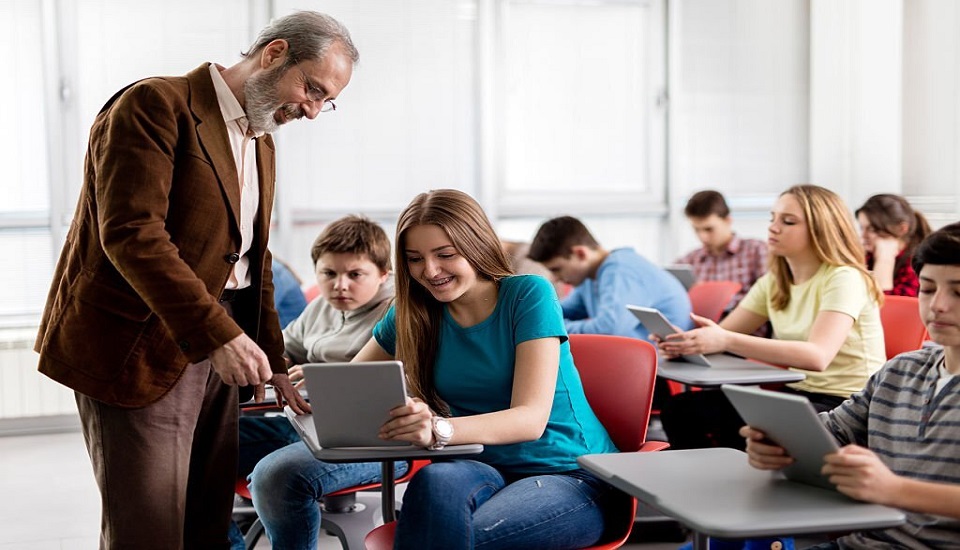The Elements Of A Digital Classroom
30th April 2022
What are the key components of a classroom?
Have you ever thought about it?
It can be the space, the room, or even the chairs and tables that it holds.
Or are the people that matter?
Can a video conference session including eight people to learn chemistry be termed ‘a ‘classroom’?
Maybe it is just the tools. A woodworking classroom would ideally keep woods, saws, and other devices to shape the wood. It could be a vocational center or garage or retail environment.
The question now is related to the purpose of these tools and spaces. Compared to the woodworking classroom mentioned above, the idea of a ‘digital classroom’ is more flexible and promises to meet the needs of the new-age learners.
If you are looking to enhance your teaching skills to become ready for teaching in a digital classroom, pursuing an Internationally Accredited Teaching Diploma Course will be a great idea. There are several online international teaching diploma courses being offered by renowned institutions where you can enroll to acquaint yourself with 21st-century teaching methodologies!
Digital Learning in the Classroom!
The digital age that we live in has affected various aspects of our lives in general, turning around and changing the nature and source of information, transforming our society, taking economic initiatives, and changing our lifestyles. Both the amount of information and access has immensely grown and evolved.
What is digital learning?
Educational technology is defined as "the study and ethical practice of facilitating learning and enhancing performance by using ideal technological processes and resources.
Now that we have understood the concept of digital learning, let us take a look at the various elements of a digital classroom!
1. The Spaces
The spaces or setups used in a digital classroom can be customized or made anonymous, static or fixed, responsive or mute open or closed. The main theme is potential, though that potential can go unused if there is a lack of order between learning goals and the technology used to reach them.
As described above, a digital classroom can be entirely customized for each student to have access to the correct content, colleague, or audience at the right time.
2. The Tone
It may seem odd but the tone of a digital classroom is one of its most prominent characteristics. From the style of the assignments to the nature of work to the frustration of buggy software, digital classrooms have a particular tone that is strikingly different from that of traditional classrooms, where all the student activities are limited and mostly teacher or classroom-centered.
The sequence of tasks in a digital classroom is often repetitive and often stupid, sometimes asking students to sign up for an account before completing an assignment and at times needing a student to complete an assignment so that they may open a new account.
3. The Technology
This character of a digital classroom is the most crucial i.e. the technology. Whether software or hardware, Wi-Fi or LANs, operating systems or social media channels, the technology of a digital classroom is the most recognized and crucial part for many.
For, e.g. apps and social media platforms like Instagram, Facebook, etc.; YouTube, live video streaming platforms (from YouTube; MacBooks, Google Chrome books, Windows laptops; iPads and Android tablets, etc.
4 The Data
The data provided in a digital classroom is important to provide accurate feedback and personalized learning for students. It can be visualized in style and easily shared, though the learning structure and curriculum must be flexible enough to reciprocate or abort to a constant inflow of new data on learning progress.
Many might not think of it as a very ‘progressive,’ idea but in the environment of public education environment, few things are more important than data.
5. The Products & Opportunities
The products and opportunities in a digital classroom are closely linked to the purpose and its audience. As students are gaining knowledge in digital spaces, they are capable of creating new ‘things’ like media, brands, collaborations, platforms, etc., which then creates several new opportunities for them both in and out of the classroom.
Thus, as we are living in a digital era, the job of educators is to review and create innovative educational methods supporting students in their good use of digital media and technology. As a teacher, if you want to upgrade yourself to enhance your teaching skills to survive in the digital era, you can pursue an Online International Teaching Diploma course and equip yourself with the skills and methodologies that are important for building an international teaching career in the near future.
Written By : Neha Sharma
Leave a Reply

